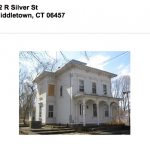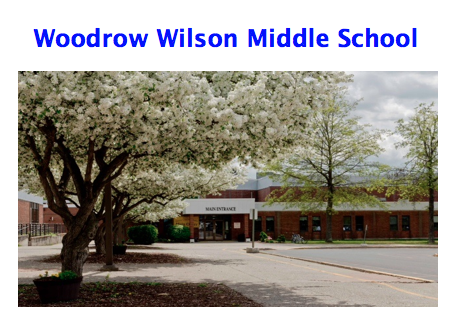
Glue, cut up pieces of paper, and string. These were the tools used to ignite a flame under the fight against housing discrimination[1]. Ben Dixon, Boyd Hinds and Julia Ramos, three very unique individuals with extremely different backgrounds came together to map out the majority of power within the largest, most influential corporations within the Hartford community. It quickly became evident that those controlling the money flow, the housing laws, and the insurance rates were white males[2]. Thus began the battle of uncovering active discrimination within these practices, with a vision of reforming the system for a permanent fix for institutionalized racism.
Boyd Hines, a white male who grew up with a middle class family in the suburbs of Hartford introduced Dixon to Ramos when he offered them a teaching job at Westledge School. This school was a private institution that attempted to provide a better education for Puerto Rican and African American boys. Julia Ramos was Puerto Rican woman and graduate from the University of Hartford. Ben Dixon was an African American man who grew up in Hartford, and received the opportunity to attend Howard University. But the time Hines, Ramos and Dixon spent at Westledge was limited, for their observance of one school making a minute difference seemed lackluster against tackling a fundamental, institutional issue[3].
True, Education/Instruccion set out to fight a legal battle against institutional racism. However, with equal importance, Education/Instruccion was an organization that wanted to educate the people who were being subjugated without their knowledge. Education/Intrucicion wanted to bring to the attention of those facing discrimination, perhaps without their knowledge, that this system is flawed, and someone…something…this group of three brave individuals is willing to take a stand against the injustice. Therefore, they started out offering consulting services as well as creating articles which spell out corporation corruption in a way that is coherent[4]. The bilingual name of the group illustrates this goal: bridging a gap within the Hartford community.
Testing and Collecting Evidence
The original Fair Housing Act of 1968 weakly prohibited discrimination in the “sale, rental, and financing of dwellings, and in other housing-related transactions, based on race, color, national origin, religion, sex, or familial status.”[5] However, this practice was barely enforced and laced with loopholes. Education/Instruccion began to engage in “testing” practices. This testing is a way of measuring the validity of information and quality of customer service given to potential buyers, by sending in actors looking to purchase homes. For example, as testified in the case The Barrows and Wallace Co., et al.: Mr. and Mrs. Hall were African-American testers[6]. Without revealing any facts about their race, Mrs. Hall contacted the Mary Ellen Walsh and Dorothy Oasis office for real estate. Over the phone, Mrs, Hall inquired about homes in the Greater Hartford area, west of the Connecticut River. Their price range was between $25,000 – $30,000. Appointment was made to look at houses, but Mrs. Hall cancelled the appointment over the phone, asking to postpone, yet also inquiring about where their potential houses were located. Mrs. Walsh told Mrs. Hall a variety of addresses located in the Hartford and West Hartford areas. Mrs. Wash insinuated that Mrs. Hall should move out of the Blue Hills area, because the neighborhood was changing. However, when Mrs. Walsh finally met Mrs. Hall in person, only houses in the Blue Hills area were shown to her. All of the homes in other areas of Hartford including West Hartford were all of the sudden unavailable[7].
The Court Case
On April 19, 1974, a suit was filed against the Real Estate commission in New Haven Federal District Court. The plaintiffs were six citizens, fifteen community organizations, the Connecticut Coalition for Open Suburbs and Education/Instruccion. The complaint lodged was entitled the, “Title VIII Open Housing Complaint” and it stated that the state of Connecticut had been plagued by the Real Estate industry’s “racial steering” (encouraging buyers of certain races to move into certain areas) and “blockbusting” (encouraging white homeowners to leave neighborhoods with growing minorities and sell their homes for a low price) techniques and discriminatory hiring practices. With multiple counts of testing evidence proving racist tendencies by real-estate agents, many of these major corporations decided to “settle.” Indirectly admitting guilt, Education/Instruccion was responsible for bringing to light unfair practices that were plaguing what could be a diverse community.
[1] Agosto, Jasmin. “Fighting Segregation, Teaching Multiculturalism: The Beginning of the Education/Instruccion Narrative of the 1970s Hartford Civil Rights Movement”. Educational Studies Senior Research Project, Hartford, Connecticut: Trinity College, 2010.
[2] Agosto, Jasmin. “Fighting Segregation, Teaching Multiculturalism: The Beginning of the Education/Instruccion Narrative of the 1970s Hartford Civil Rights Movement”. Educational Studies Senior Research Project, Hartford, Connecticut: Trinity College, 2010.
[3] Agosto, Jasmin. “Fighting Segregation, Teaching Multiculturalism: The Beginning of the Education/Instruccion Narrative of the 1970s Hartford Civil Rights Movement”. Educational Studies Senior Research Project, Hartford, Connecticut: Trinity College, 2010.
[4] Agosto, Jasmin. “Fighting Segregation, Teaching Multiculturalism: The Beginning of the Education/Instruccion Narrative of the 1970s Hartford Civil Rights Movement”. Educational Studies Senior Research Project, Hartford, Connecticut: Trinity College, 2010.
[5] “Fair Housing Program.” Hartford.Gov –. N.p., n.d. Web. 13 Oct. 2013. <http://www.hartford.gov/file-a-complaint/97-programs-a-initiatives/development/629-fair-housing-program>.
[6] United States of America v. The Barrows and Wallace Co., Et Al.,. Attatchement VI 6-8. The United Sattes District Court for the District of Connecticut. 14 June 1974.
[7] United States of America v. The Barrows and Wallace Co., Et Al.,. Attatchement VI 6-8. The United Sattes District Court for the District of Connecticut. 14 June 1974.
















